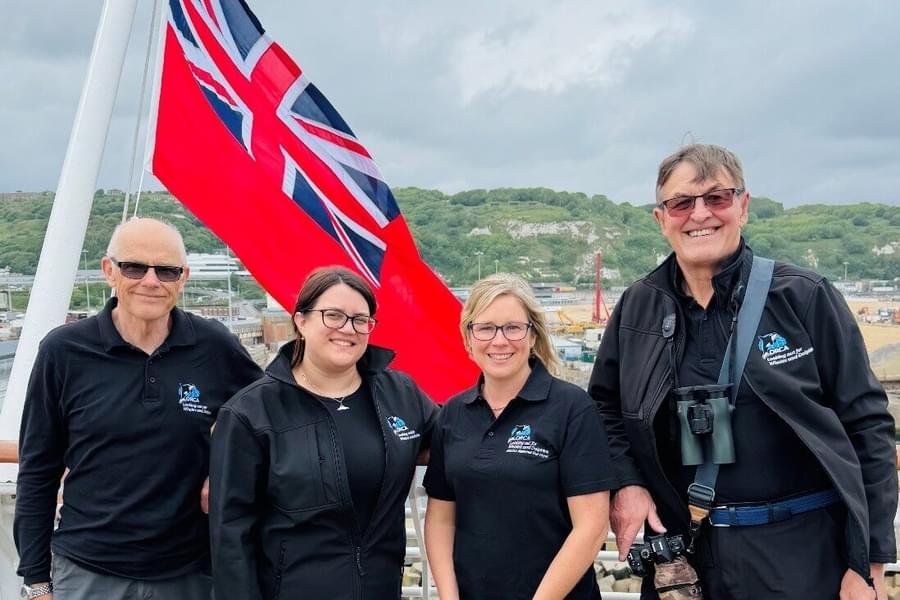Since 2007, teams of dedicated volunteer ORCA Marine Mammal Surveyors have been invited on board Saga cruise ships to provide guests with incredible wildlife experiences through delivering presentations, running deck-watches, and generally being on hand to talk about any wildlife seen on the trips. ORCA Marine Mammal Surveyors collect vital data on the whales and dolphins they see during these trips, whilst also being out on deck to help guests to spot and identify the marine life they are seeing for themselves.
In May, Chris, Maija, Katy and Richard boarded the Spirit of Discovery in Dover for what proved to be an exceptional three weeks of sightings totalling 990 cetaceans, not to mention 68 turtles (nine Loggerhead turtles), 70 species of bird, as well as a supporting cast of lizards, tortoises, terrapins, flying fish, exotic fish, sharks, a ray, butterflies, dragonflies and damselflies. Wildlife Officer Richard, shares the team’s experience:
On the evening of Thursday 22nd of May we set sail past the White Cliffs of Dover. It is always exciting sailing to the Mediterranean from Dover as it means travelling over the edge of the continental shelf (from 200 metres deep) to the Bay of Biscay abyssal plain (3,000-5,000 metres deep).
Our first dolphins were seen off the Channel Islands the next morning, Friday 23rd May. In the afternoon I gave an introductory presentation on the wildlife we could hope to see during the trip. Little did we know at that point that we would see all the possible cetaceans we suggested except harbour porpoise! There was an expectant crowd on Deck 14 after the presentation as we passed over the continental shelf, but with dinner beckoning the crowd thinned to just one guest, when we suddenly had non-stop sightings for over an hour of a sperm whale, pilot whales, over one hundred common dolphins and striped dolphins. At one stage the whole forward horizon was full of dolphins swimming in towards the ship. We were too busy counting, inputting the data or photographing them to take a video of the spectacle, but one guest had a memory he will never forget.

As we traversed the Bay of Biscay and the Iberian Peninsula over the next few days, we saw another sperm whale, a fin whale, bottlenose dolphins, striped dolphins and common dolphins. Our first migrating birds also rested on board in the form of two reed warblers and a corncrake.
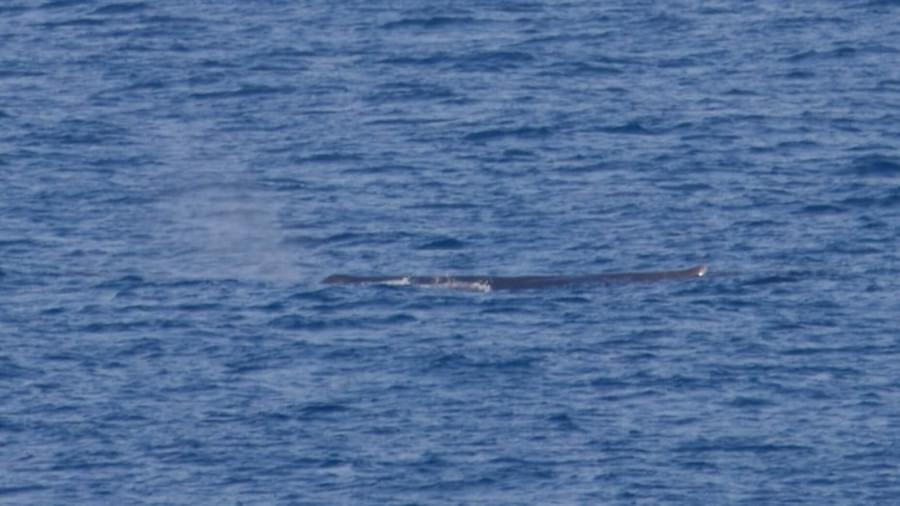
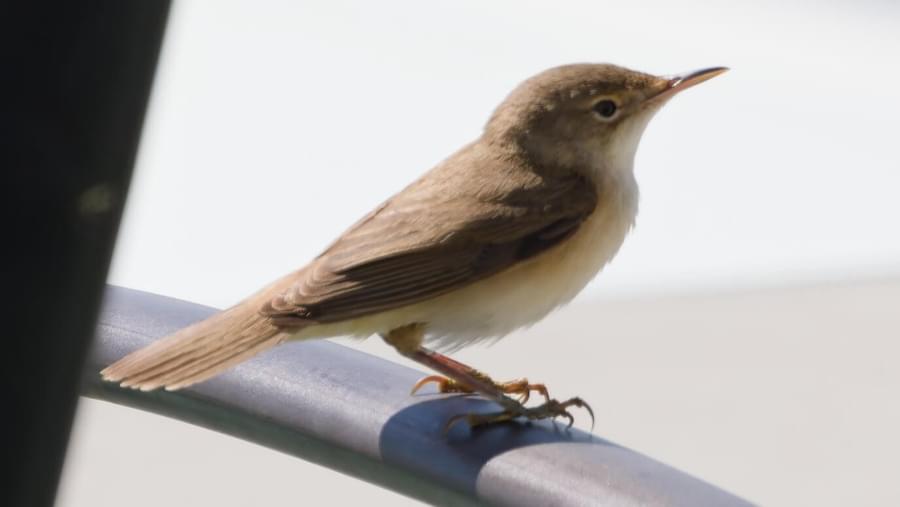
It was a great pleasure and relatively unusual to see four turtles (one of them a loggerhead) and our first flying fish outside the Mediterranean. There are two breeding species of turtle in the Mediterranean, the green turtle and the more common loggerhead turtle. To positively identify them a good photo is required of the shell so that the scutes (plates) can be counted.

On Monday 26th May we entered Motril on the Mediterranean coast of Spain. A park near the centre of town hosted a variety of wildlife from red eared terrapin (an invasive species), marsh frogs, the spectacular monarch butterfly, turtle doves, zitting cisticolas, serins, hoopoes, pallid swifts and a spotless starling.
From port, distant orca and an unidentified shark were seen cruising along the breakwater, spotted by Katy. The flat calm waters boded well for our departure and sure enough that evening we saw more orca, pilot whales, bottlenose, striped and common dolphins. Whilst we were all keen to stay on deck surveying, hunger got the better of us with the compromise of dressing for dinner with our cameras, which paid off very well as mid conversation Katy spotted three Cuvier’s beaked whales gently cruising past the ship, these were seen by many of the guests at dinner with us. To cap off a great day I photographed a breaching sunfish!
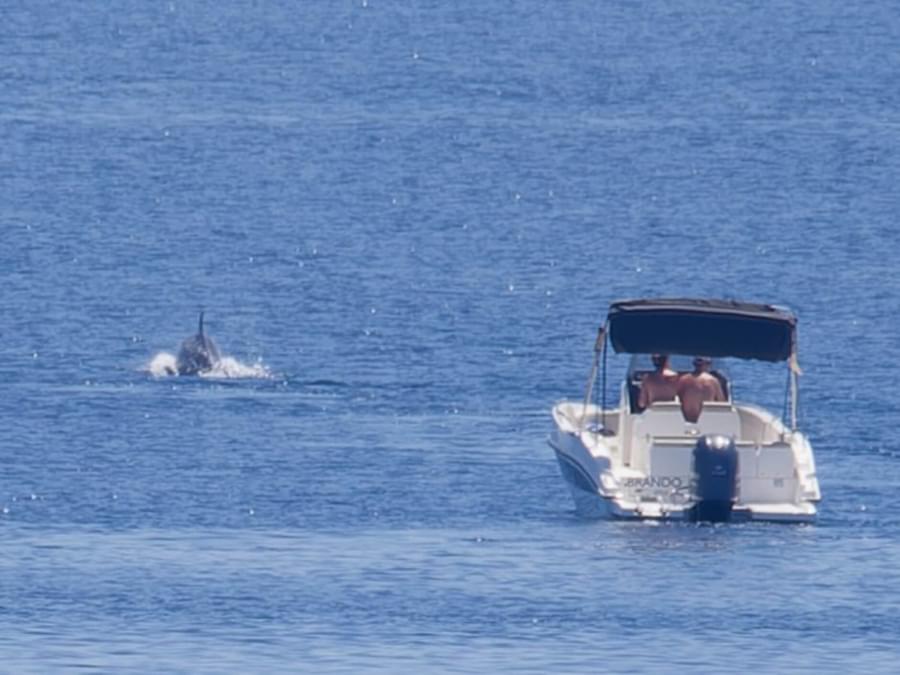
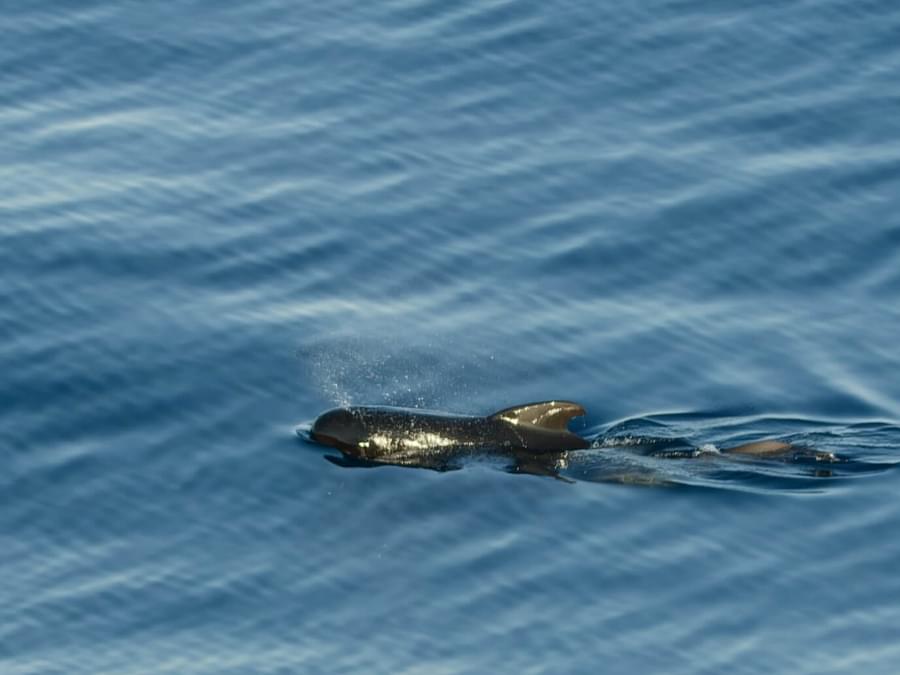
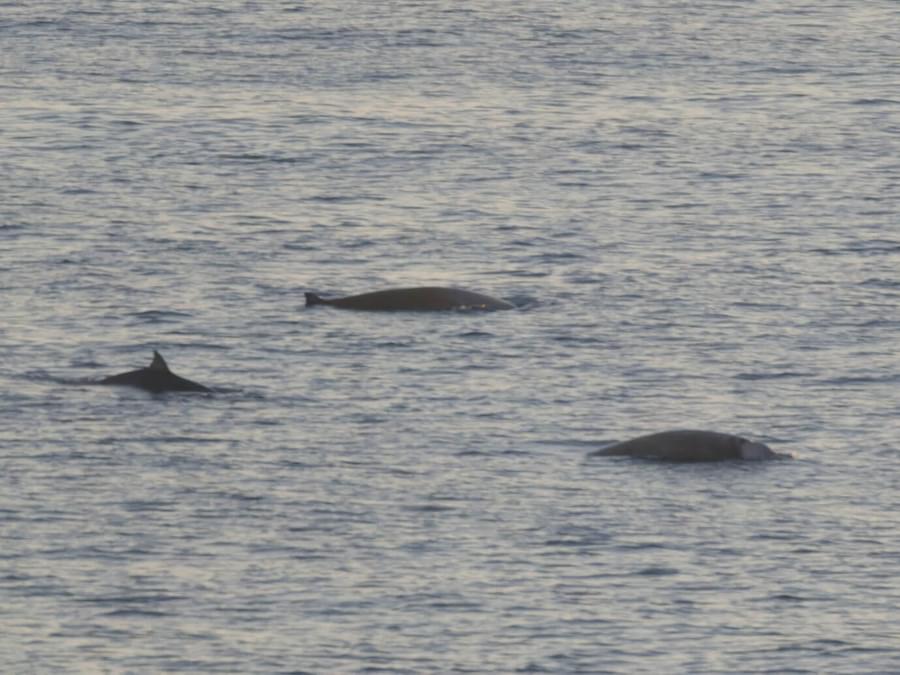
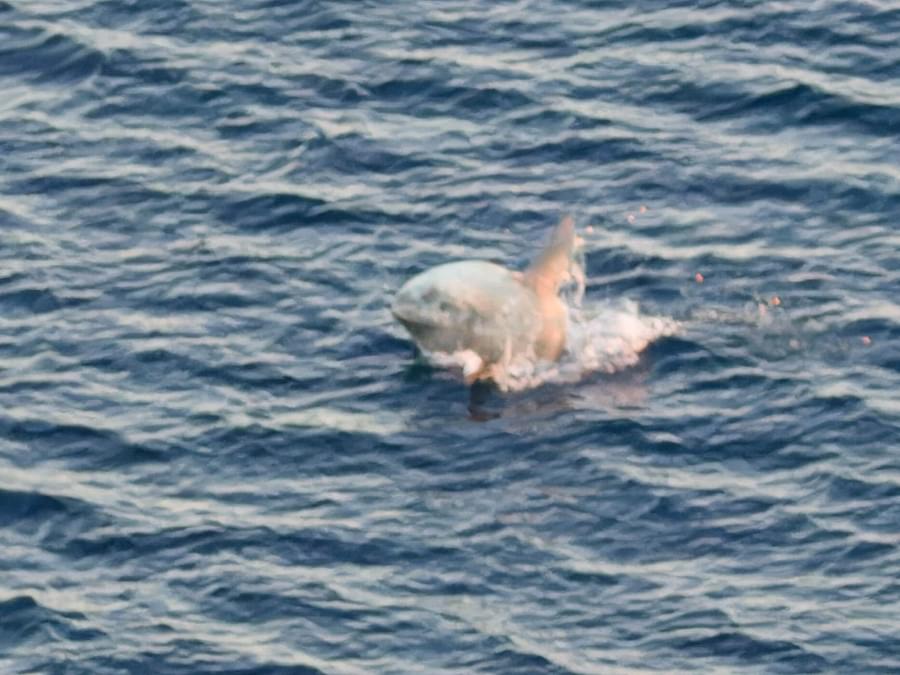
On Tuesday and Wednesday the 27th and 28th of May we passed 30-40 miles off the coast of Algeria and Tunisia. This is normally a quiet area for wildlife, but excellent sea conditions and persistence rewarded us with sightings of common dolphins, turtles, sunfish and flying fish. Mediterranean bird specialities seen included Audouin’s gull, Scopoli’s and yelkouan shearwaters. On Thursday 29th May we entered Valetta, Malta, a magnificent city steeped in history. On an island tour it was a surprise to find a blue rock thrush at the Blue Lagoon, the national bird of Malta. Spanish sparrows, a prettier version of the house sparrow, zitting cisticolas and Sardinian warblers were also seen.
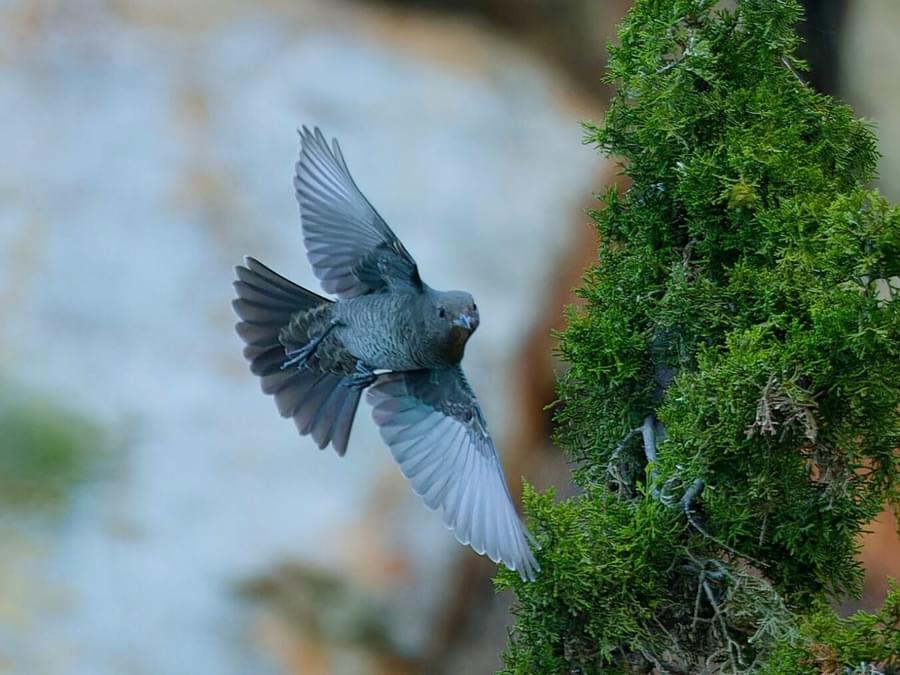
The following day was spent transiting east along the south coast of Italy where turtles were recorded and we had an opportunity to photograph the different sea states to explain the challenges of whale watching to the guests in the daily ORCA information slide for the TV screens. The high sea state necessitated surveying from the Britannia Lounge and meeting Mr. Motivator after his lively and well attended session.
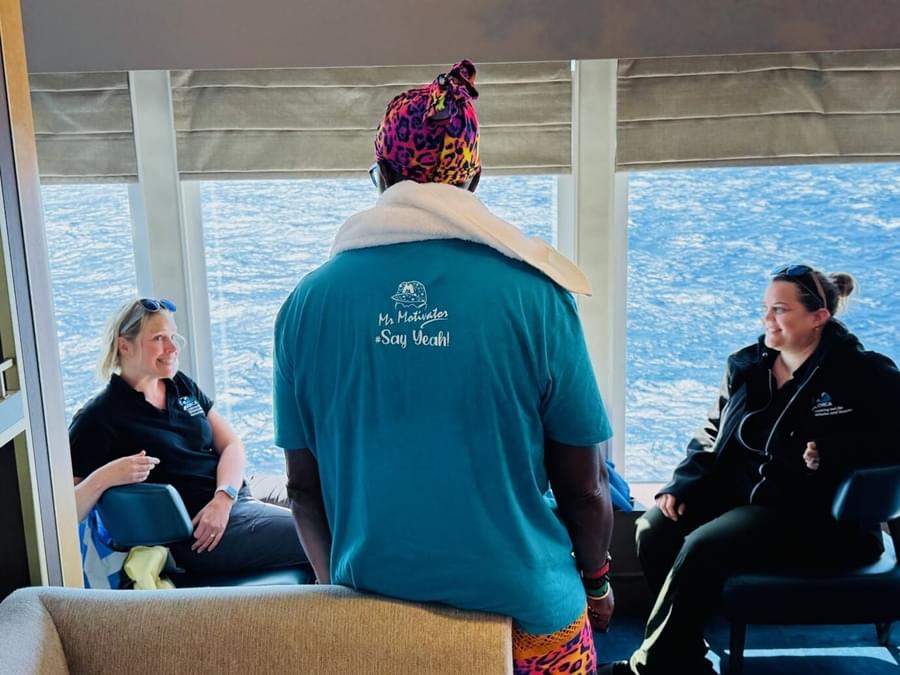
The next four days were port visits to the stunningly beautiful Dalmatian coast, starting with Korčula on Saturday the 31st of May. The old town is a spectacular mini version of Dubrovnik. A morning visit to a local nature reserve was rewarded with views of stunning butterflies, singing nightingales and sub-alpine warblers. Guests reported seeing dolphins and flying fish over the next few days. Split was the next port of call with a beautiful nature park and a beach to the west of the city. Marjan park had wonderful views and an array of butterflies, birds, lizards and insects. On Monday 2nd June we visited Dubrovnik, a UNESCO world heritage site; a stunning walled city with a history going back beyond medieval times, destroyed by an earthquake in 1667, besieged and badly damaged in the Croatian war of independence in 1991, but now rebuilt to its former glory. The last of the four Dalmatian port visits was to Kotor in Montenegro, another world heritage site; it was a pretty town at the end of a beautiful fjord-like bay of towering limestone cliffs.
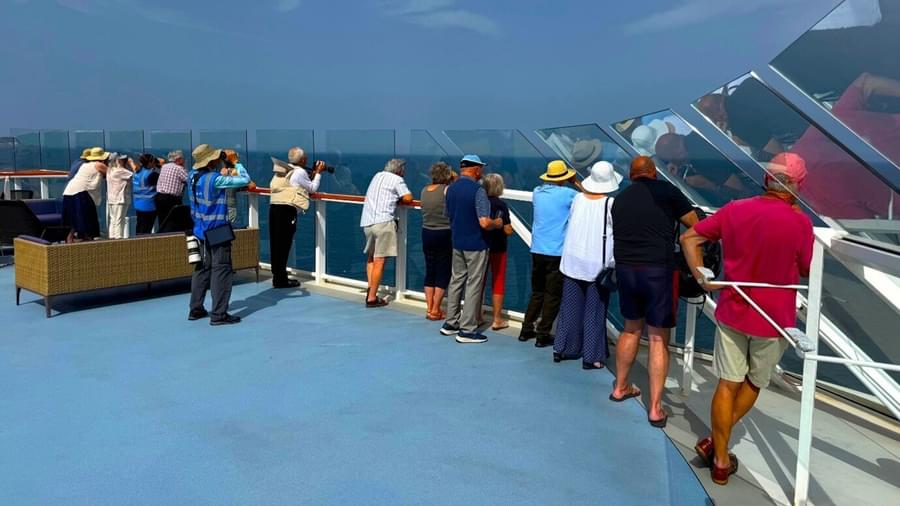
On Wednesday 4th June we sailed around the heel and boot of Italy, sightings included one unidentified dolphin, turtles, tuna, flying fish and a ray. Our next stop was Syracuse in Sicily on the morning of Thursday 5th June, we recorded common dolphins from the town. The nearby salt pans (Saline di Siracusa) is an unkempt wildlife reserve holding nesting black-winged stilt, stone curlew, avocet, a small colony of little and sandwich terns, as well as the native marginated tortoise and Italian wall lizard. We then had two days at sea travelling west along the north coast of Africa and the south coast of Spain.
On Friday 6th June off Tunisia we recorded striped dolphins, common dolphins (including a calf) and unidentified dolphins. We also recorded turtles and many Scopoli’s shearwaters.
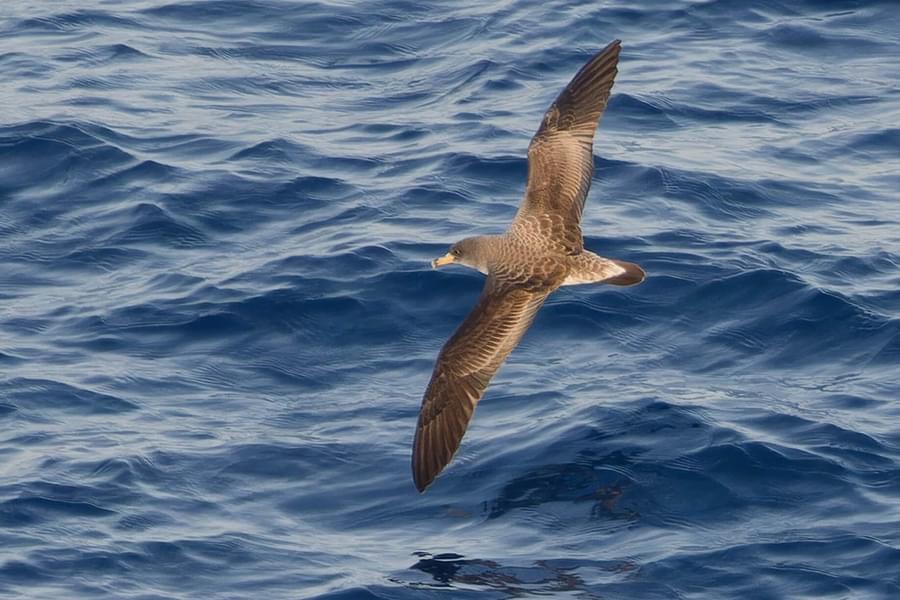
Saturday the 7th June was another special day of sightings with four cetacean species, all recorded as we transited from Algeria to Southern Spain. First striped dolphins put on a spectacular display, with 75 recorded in total followed by Risso’s dolphins, Cuvier’s beaked whales and common dolphins. We also recorded turtles and bluefin tuna.
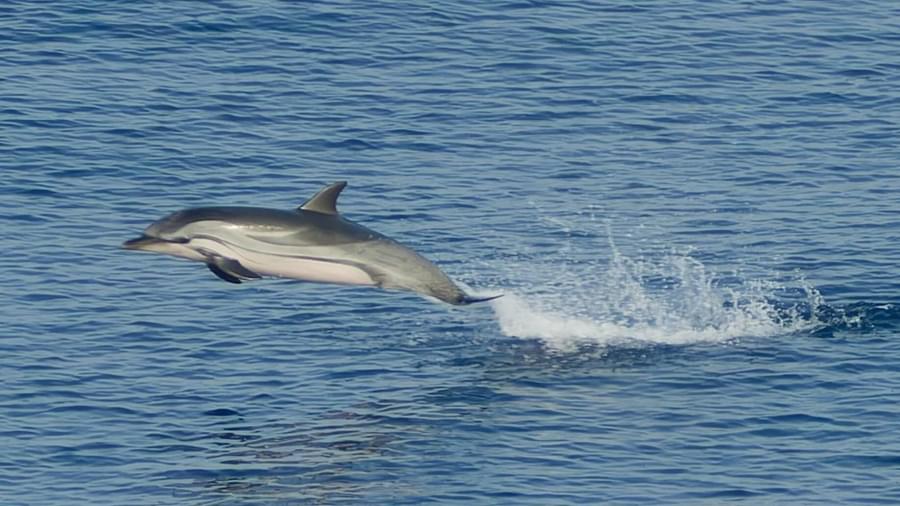
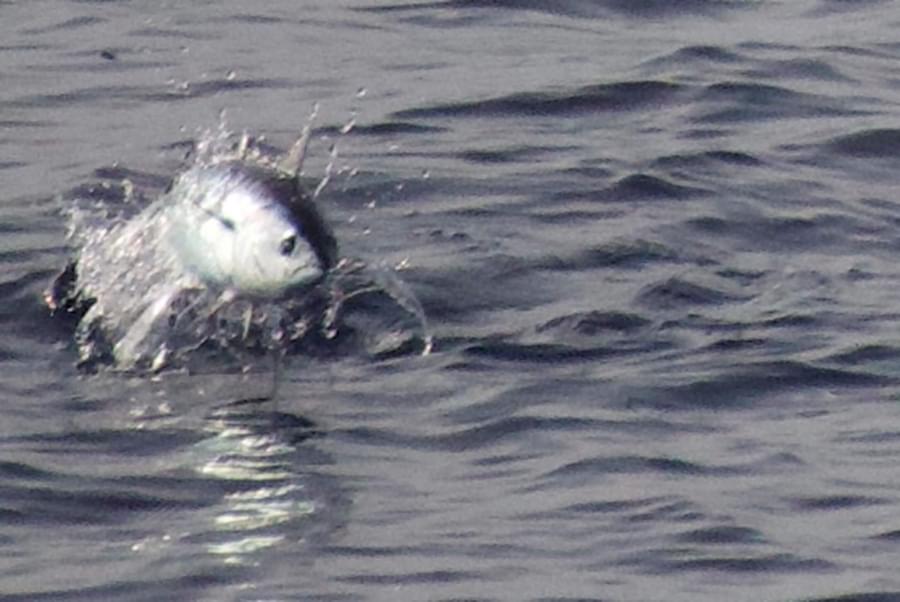
Sunday the 8th June was a visit to Gibraltar with almost continuous common dolphin sightings, nine striped dolphins and huge rafts of Cory’s Shearwaters as we approached. The sea was very calm so the ORCA team went on a dolphin watching trip into the Strait of Gibraltar with wonderful views of the resident dolphin pods happily bow riding. The crew’s knowledge and sensitivity around the dolphins was very impressive. Despite the large number of cargo ships in and out of the area, it is home to hundreds, if not thousands of dolphins at certain times of year. The dolphins use the area as a breeding and nursery ground due to the availability of food as a result of the nutrient rich meeting of the Atlantic Ocean and the Mediterranean Sea.
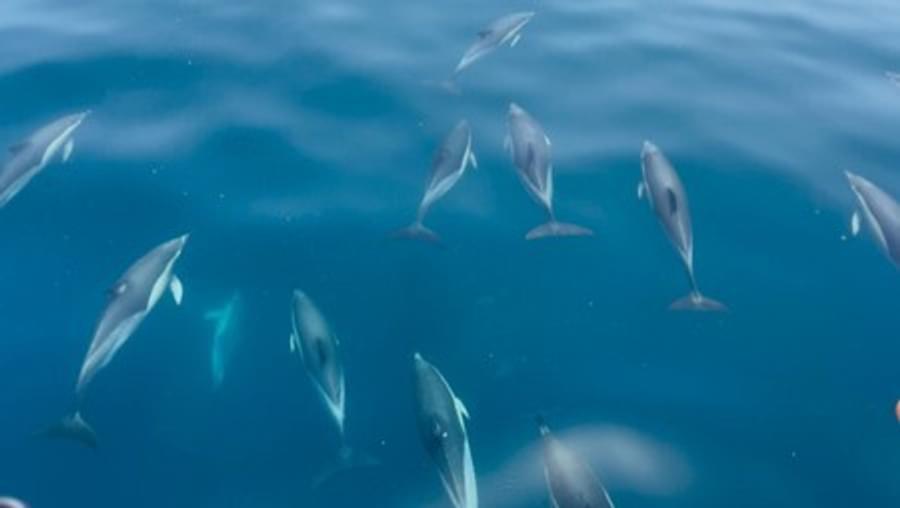
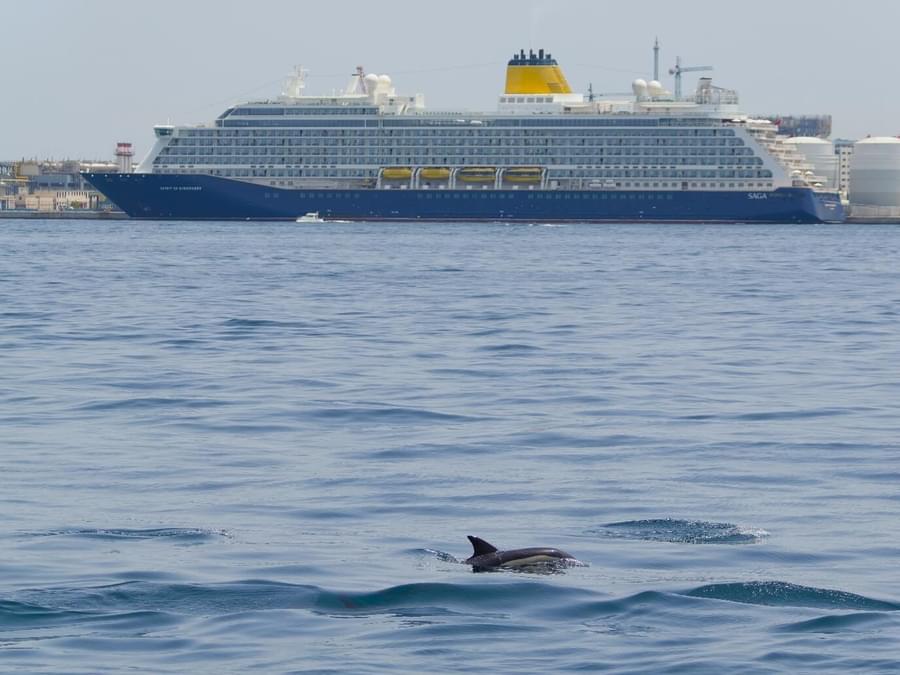
As we travelled north off the coast of Portugal, probable fin whales and a sperm whale were recorded, as well as striped and common dolphins. We awoke off the Brittany coast on Tuesday 10th June in gloomy and misty conditions. There were good numbers of Manx shearwaters as well as lesser black-back gulls, gannets, kittiwakes and herring gulls, but no more cetaceans were seen on the cruise up the Channel. The final presentation was delivered on our final sea day, with a summary of our sightings totaling 990 cetaceans, despite much anxious watching and searching on the last few days we could not break one thousand!
Before we knew it we were alongside in Portsmouth on Thursday 12th June and it was all over. We were lucky to have lots of keen guests and skilled photographers joining us on deck during the cruise. It was also a pleasure to conduct distance sampling surveys on the bridge of the Spirit of Discovery, which took place as we passed through any Important Marine Mammal Areas, or high risk vessel strike areas. During these surveys all the crew were so helpful and accommodating. Distance sampling surveys are the best way to estimate population numbers, density and abundance of cetacean populations. In 21 days we sailed 5,770 nautical miles, surveyed and engaged with guests on deck for 171 hours, covering 2,720 nautical miles, recording 990 cetaceans of nine species. We conducted 28 hours (440 miles) of distance sampling surveys on the bridge. Over the course of the cruise Quizmaster Chris also delivered three cetacean based quizzes and the team conducted a wildlife clinic.
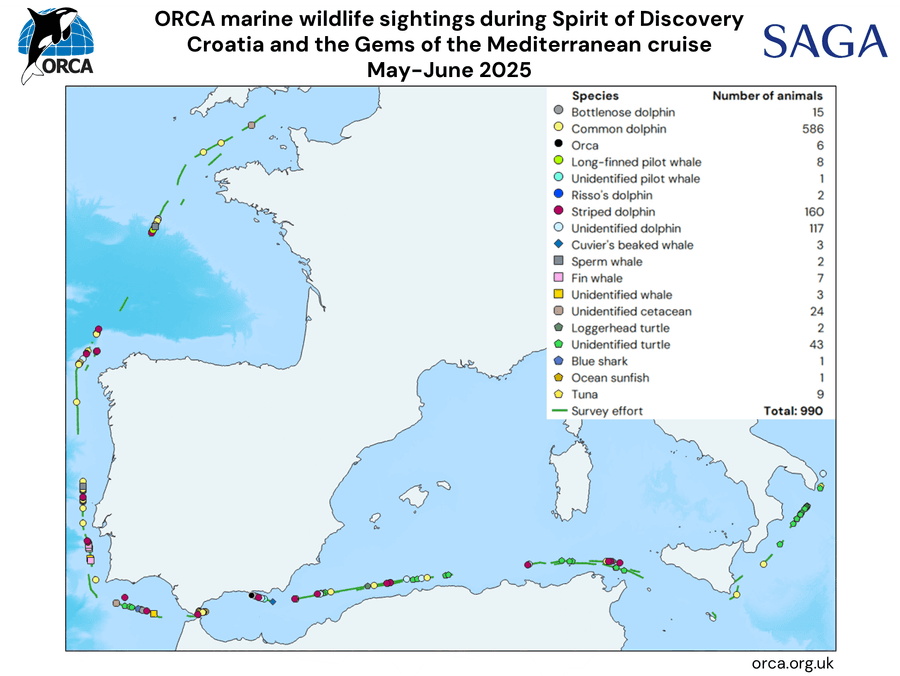
The team would like to thank Captain Franko Papić, Chief Officer Andrew Korbey, Cruise Director Paul Hancox and Assistant Cruise Director Resty Sacedor and the whole crew, along with the many guests who spent time with us, for a cetacean-filled trip!
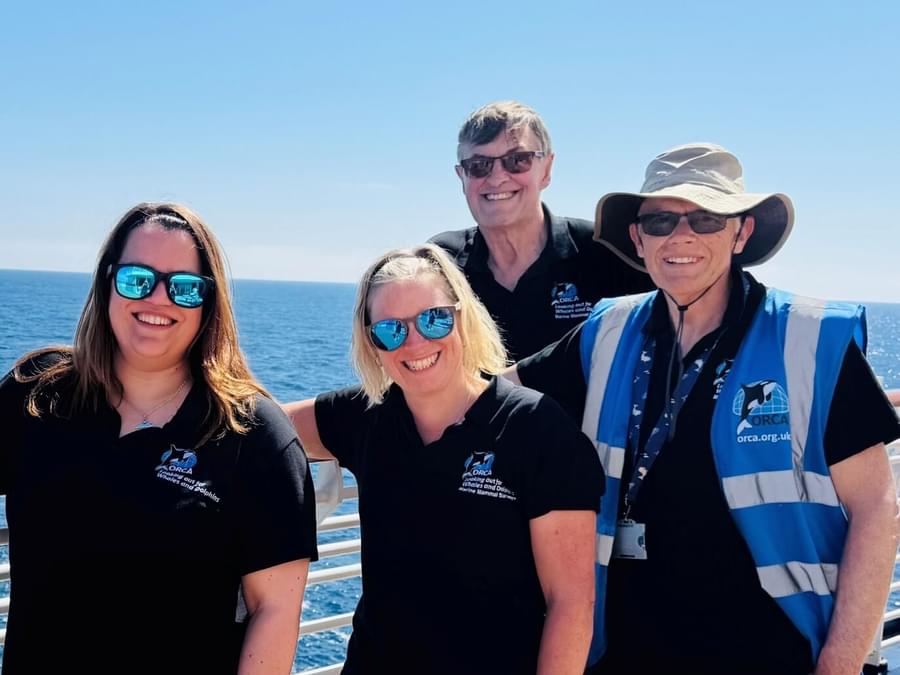
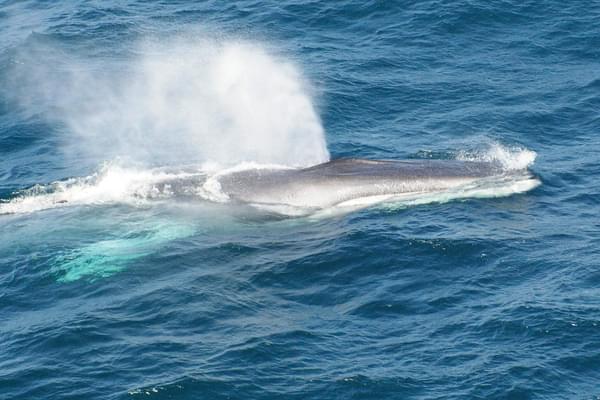
The best way to really appreciate how amazing whales and dolphins are is to see them in the wild where they belong - and you can do that from right on your doorstep by joining one of our Sea Safaris! Visit www.orca.org.uk/watch to check out all the upcoming dates and take your first step on your very own whale and dolphin adventure!

